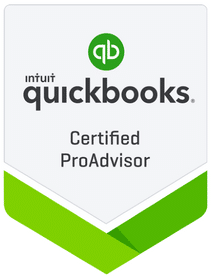- Patrick Roney
- (877) 503-8607
Follow Us :
Follow Us :
Proledge
January 31, 2025
Bookkeeping fraud is an issue that’s still too little understood by the vast majority of SME owners present in North America. Are you the administrator of a locally relevant company, and in the last couple of years, have your operations expanded at a predictable rate? If so, the profitability of your services has probably risen as well, which naturally attracted the unwanted attention of fraudsters. Bookkeeper fraud is, unfortunately, all too common in the current financial medium, and you, as a business owner, can never be too careful, especially so when one modification in your financial data could have significant ramifications for your profitability.
As a professional bookkeeping agency, our role is to ensure that your financial recordkeeping data is probably cataloged and appropriately stored for IRS inspections. However, at the same time, we understand that you might have reservations regarding our credentials and you might be weary about the access you are prepared to give to our employees. That’s natural, and it’s part of doing business in this field. Therefore, to put our customers at ease, our agency implements a “two sets of eyes for one task” policy, in which your bookkeeping operations will be constantly surveyed by two financial recordkeepers, one senior and one junior.
The benefits in this case are twofold. To start, most bookkeeping operations necessary for the continuation of daily activities involve transactional cataloging procedures, which are not necessarily complex but rather time-consuming. It will make, therefore, more sense for these tasks to be handled by a junior employee, who will reduce the costs of the financial recordkeeping operations. Secondly, enabling dual control over your firm’s financial tasks means that no single individual will have total control over your transactions. The result? A reduced likelihood of bookkeeping mistakes and more chances to prevent fraud.

When contacting a legal bookkeeper, experience, credentials, and security guarantees are not enough. Are you prepared to leave your financial data in the hands of our employees? You do not want to depend on an accountant? If so, like any responsible business owner, you will also probably want to segregate your firm’s internal bookkeeping responsibilities and split your venture’s financial management tasks evenly between multiple individuals. After all, the effects of bad recordkeeping can be devastating.
Our Austin-present company could manage your ongoing transactions and prepare the invoices necessary for your contracted services. However, the final approval for their deployment will come from the senior management. In an ideal world, bookkeepers have free rein to analyze financial processes and handle anything from invoices to ongoing payments. That said, we do not live in an ideal world. Therefore, if you want to manually review the processing of your financial data over a certain amount, our agency is more than willing to accommodate your requests, as we know how to prevent fraud, and we are transparent with our financial recordkeeping procedures.
The bookkeeping agents employed by our firm will work closely with your firm’s internal staff and perform, alongside them, independent evaluations of your past financial data. Do you think something is amiss with your previous expense reports, or do you think the previous bookkeeping consultant you worked with omitted something when communicating with your CPA? Then, we will double-check their work and let your employees and CPA verify our findings. A double set of eyes approach can help reduce bookkeeping fraud, detect errors in past or current financial data, and, more importantly, improve the accuracy and relevancy of the performed tasks.
Are you new in this space, and you don’t exactly have full confidence in the integrity of your employees? Have you heard horror stories about the effects of bad recordkeeping? Do you want to learn how to prevent fraud? In such a case, you should be wary of check, payroll, and invoice fraud. Fraud, in the digital medium, is complex but also surprisingly easy to understand. Your employees, or outsourced personnel with access to accounting books, could write fictive checks to remote vendors for services that were never performed. If these sums are not substantial, they might slip under the radar and, with time, contribute negatively to your company’s financial balance.
Likewise, you will need to pay attention to blank checks and financial records that paint a misaligned view of your current monetary records. How can our company help? For one thing, we will digitalize your internal bookkeeping operations and move a significant part of your internal data from the offline medium to the cloud. By going for this route, the paper trails of your records will be eliminated and replaced with a solution that’s available anytime, regardless of location. Our team will reconcile your accounts and conduct ongoing audits of your past data.
Likewise, we specialize in QuickBooks, and therefore, we will utilize the functions of this popular program to separate the responsibilities between us, your CPA, and the company’s senior management. Ultimately, how you want us to work together is up to you. Do you want us to perform periodic audits of past financial recordkeeping trails, but you are not comfortable with us authorizing payments? That’s fine. Would you like us to keep detailed logs of our activity? If so, we will be happy to do so.
You can contact us anytime if you have questions or encounter a problem with your bookkeeping program.
For this operation, there are two main steps that need to be followed. Before starting, our agents will need to select the desired transactions in the undeposited funds account. Then, in QuickBooks, we will create a new bank deposit, choose the transactions you want to combine, and save them as a new deposit slip. Do you want to review a past bank deposit? In such a case, we will need to go to the reports tab available in QuickBooks, access the sales and customers section, and then click on the deposit that requires your attention.
Likewise, if you want to delete a deposit, we can go to the charts of account tab available in the settings menu of the application, click on the account associated with it, and delete it directly from the app with all the funds inside it getting redistributed to your undeposited funds account. The process of recording your deposits in QuickBooks can increase the traceability of your firm’s financial transactions, which in itself will reduce the likelihood of common fraud schemes.
By configuring your charts of accounts and performing regular audits in QBO, our agency will nullify the impact of blank checks on your profits, help you prevent fraud, and keep track of your employee’s access to your firm’s transactional data. We know how to prevent check fraud, we are always ready for your questions, and we can handle anything, from the management of your account payables and receivables to acting as a bridge between your firm’s upper management and the vendors or banks you are collaborating with. We are aware of the most common fraud schemes active in this sector, and we guarantee our professionalism via our reputation.


Fill out the form below to sign up to our Blog Newsletter and we’ll drop you a line when new articles come up.

For many business owners, taking care of their business is like taking care of a baby. If you want a successful business, you need to always pay attention to the

Bookkeeping and accounting are words that are used interchangeably by most people. It’s true that both of these are about the financial management of your business, but in different ways.

It’s that time again! The tax season is slowly but surely coming to an end and that means you can’t postpone it anymore. You’ve got to figure it out. We

There are lots of businesses that need to find efficient ways to keep track of their finances nowadays, and if you are a business owner, you have experienced this first-hand.

As we all know, automated means of running your business have started to become very popular recently due to all of the perks that it provides. This is not to

So you’re at that point in developing your small business where you’re looking into accounting solutions. If so, you might have started to wonder what’s the best bookkeeping software for
Bookkeepers.
Professional. Affordable.
ProLedge is a bookkeeping services firm.
Copyright © 2024 All rights reserved.